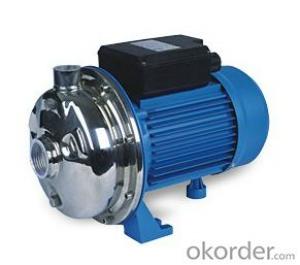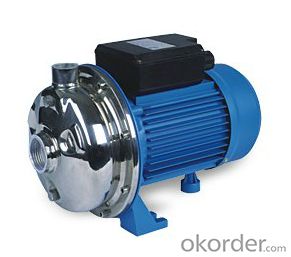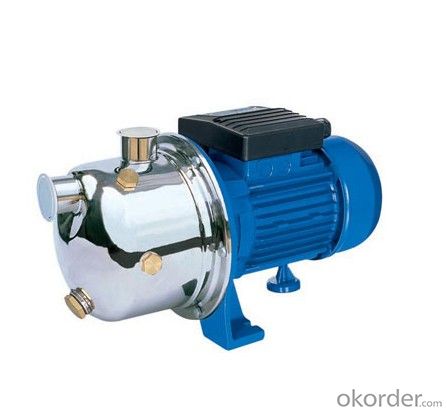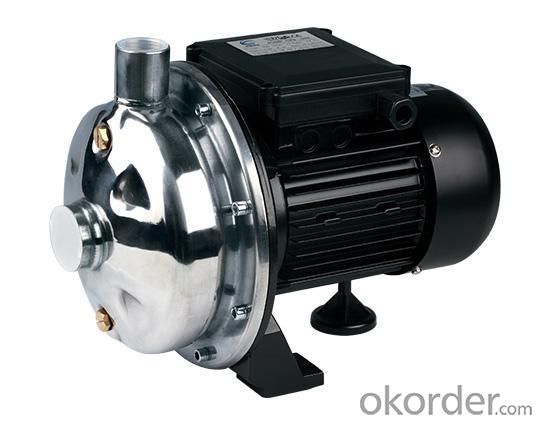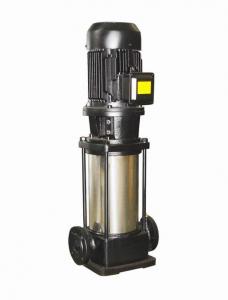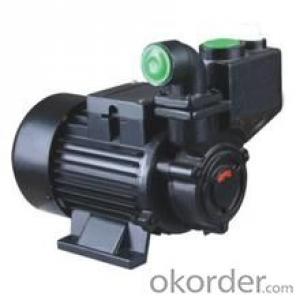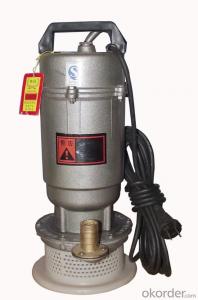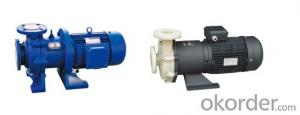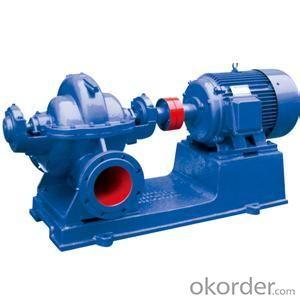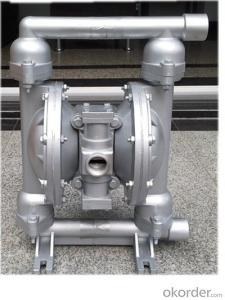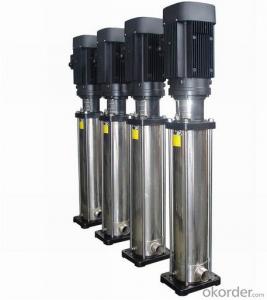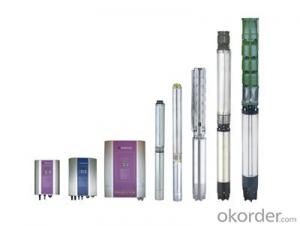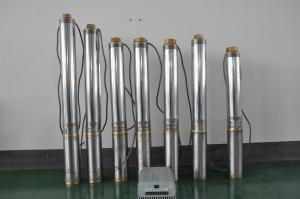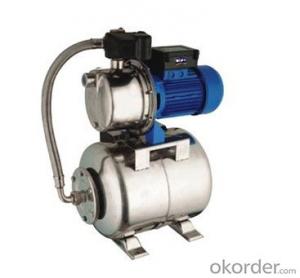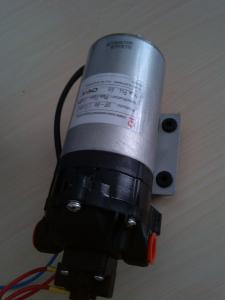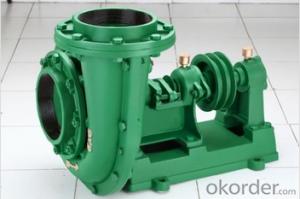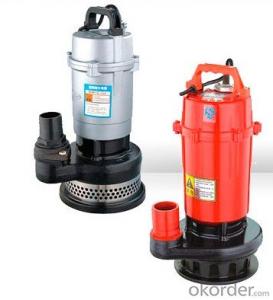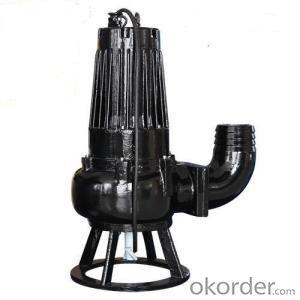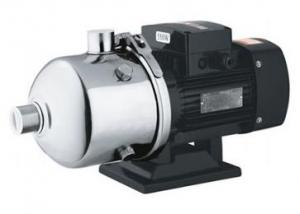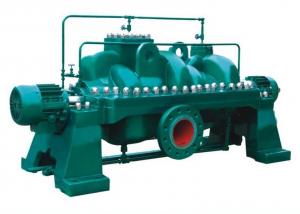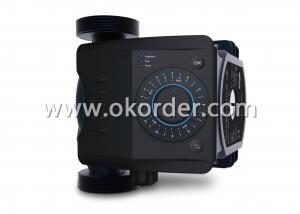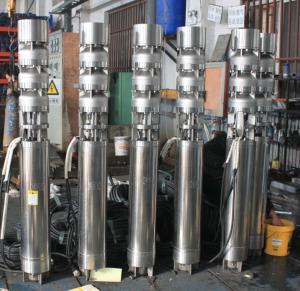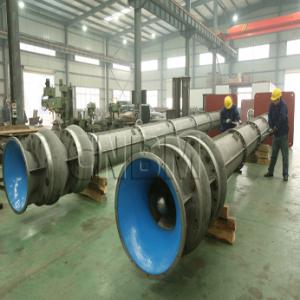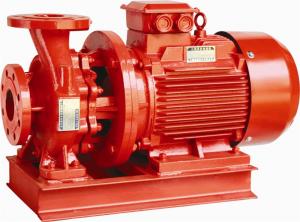Drinking Water Pump for Potable Water (CPS1100)
- Loading Port:
- Shanghai
- Payment Terms:
- TT OR LC
- Min Order Qty:
- 1 unit
- Supply Capability:
- 1700 unit/month
OKorder Service Pledge
OKorder Financial Service
You Might Also Like
Basic Info. of Drinking Water Pump for Potable Water (CPS1100)
Model NO.:CPS1100
Performance:Self-Priming Pump
Start Up:Electric Pump
Media:Water
Application:Clarified Water Pump
Type:Blade Pump
Material:Stainless Steel
Power:Electric
Structure:Single-stage Pump
Theory:Centrifugal Pump
Assembly:Liquid Pumps
Industry:Household & Agricultural Pump
Export Markets:Global
Additional Info. of Drinking Water Pump for Potable Water (CPS1100)
Packing:Export Standard Carton
Standard:CE, SGS
Production Capacity:20000PCS/Year
Product Description
Centrifugal Pump for Drinking Water
Applications of Drinking Water Pump for Potable Water (CPS1100)
For water supply from wells or reservoirs
For domestic use. for civil and industrial applications
For garden use and irrigation
Operating conditions of Drinking Water Pump for Potable Water (CPS1100)
Maximum fluid temperature up to +40°c
Max sand content: 0.25%
Motor and Pump
Rewindable motor
Three-phase:380V-415V/50Hz
Single-phase:220V-240V/50Hz
Curve tolerance according to IS0 9906
Warranty:1 year
(according to our general sales conditions)
Structural characteristics of Drinking Water Pump for Potable Water (CPS1100)
Pump body: AISI 304SS
Front cover: Cast iron
Impeller: Brass/SS
Mechanical seal: Ceramic and graphite
Shaft: 45# steel/stainless steel
Motor case: ZL102
Insulation: Class F
Protection: 54
FAQ
Q: Do you have self-priming pumps?
A: Yes, our product portfolio also includes two ranges of self-priming pumps: self-priming electric pumps and self-priming side channel pumps.
Q: Is it really necessary to fit a bleed valve for the boxes?
A: It is always best to have a bleed valve as the gas produced by the fermenting sewage is potentially hazardous.
Q: If I increase the power of the motor, must I also increase the power of the inverter?
A: You must select the size of converter that allows maximum absorption of the electric motor.
Q: Do you have pumps with grinders?
A: Yes, the WQ models.
Q: How long is your warranty?
A: Unless otherwise expressly authorized in writing, by specifying a longer period or different conditions, CNBM states that, for a period of twelve (12) months from delivery date, all Products supplied are free from defects in materials and workmanship, and conform to the applicable specifications. Either the delivery documentation or the invoice must be provided to prove delivery date. In absence of such documents, the production date appearing on the product label may suffice.
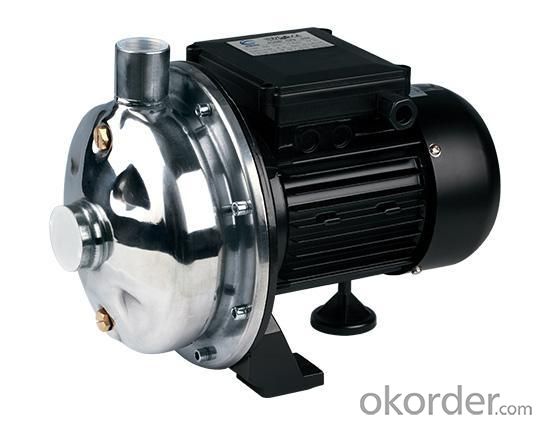
- Q: I am trying to areting my pond but air pump cost too much. I have an extra water pump available if I make two intake opening, one for water the other for air, would it work? or will it blow up the pump and kill all of my koi because it is made for pump water.
- In general an air pump a water pump are two different types of pump though if your pump is a fixed displacement type, say a diaphragm or piston type pump it could possibly be used to pump air. If your pump is a gear or centrifugal type it will not pump air as it is designed for liquids only. It might tolerate a small volume of air in it but you could end up with cavitation damage to the components the air could cause the pump to lose it's prime that is the air in the casing could make the pump lose suction. What you might be able to try is using a venturi on the pumps outlet. That way you could use your water pump to pump water use the venturi to draw air into the water flow. Without getting too scientific a venturi is a smooth restriction in the pipe that speeds up the fluid (in your case water) flow in doing so it reduces the pressure energy of the fluid turns it into velocity energy. If the restriction is sized right it can drop the pressure of the fluid below atmospheric it will draw air or some other fluid into the flow. Perhaps the easiest way you could do it would be to use a round piece of stainless steel or brass (it won't rust) that is small enough to fit into the pump outlet (I'm guessing you're using hoses) bore a hole along the centre of it then bore a very small hole at right angles to it fit it into the line. It might take a bit of experimentation to get the sizes right but it should suck a bit of air into the line at the same time recirculate the pond water. Make sure there are no restrictions downstream of the venturi as the water will come out of it rather than the air being drawn it. Hope this helps.
- Q: Pump pumping small is what happened?
- You are lifting pump or submersible pump ah? Lift pump before pumping water pump, first open the pump and then open the outlet valve, and if there is no pressure, it is time to leave, the sealing performance is not good, check where leakage, and perhaps your pump is broken
- Q: I have a 95 honda civic and I just got a new water pump. I need to know how to change it. I have an engine lift, I just want to know if the is an easier way?
- I had a 98 civic I did one on... The water pump runs off of the timing belt, so yea its a lot of work. You are going to have to remove an engine mount (pass side) support the engine with a jack and remove alot of the covers on the passenger side of the engine. I would suggest you get a repair manual at the auto parts store, probably the best $20 you'll spend (and more then I can cover here). Since you are in there, I would do the timing belt and the timing belt tensioner. Be careful not to turn the overhead camshaft when you have everything apart or you will have to set your cam timing again. Good luck, its probably a 7 out of 10.
- Q: Suppose the liquid temperature range for the water pump is -20 .. 90 °C. However it should be worked under liquid temperature upto 180 °C. For this, what has to to be done?
- (edited) The physical size of the pumping arrangement was not described. I assume that the pump has all metallic components because of the high (194 F) 90degC design operating temperature. There may be some problem with an elastomeric bellows in a mechanical seal at the 180degC (356F) temperature. Other than that, there should be no problem with the temperatures as far as the pump is concerned. There may be a need for shaft cooling to protect the standard electric motor and possibly the flexible drive coupling arrangement. (edit) Depending on the physical size, rotating speed and drive arrangement, a special coupling set-up may be needed to accommodate any potentially wide swing in operating temperatures. From ambient to 180degC there will be about a 160C (288F) variation. The liquid will be either a salt or a glycol brine solution for freeze protection at the lower temperatures. (edit) That same concentration will provide some elevation of the boiling temperature and therefore a reduction of the pressure of the water solution needed to prevent boiling. ( 130 psig is the saturation pressure of plain water at that elevated temperature.) This can be found on the charts provided by the glycol suppliers for the various glycol and salt solution characteristics. To prevent cavitation you may need to pressurize the suction. If the proposed pressure of the system is already above the vapor pressure of the solution at that maximum temperature, you may already be OK. A motor with high temperature windings may be considered.
- Q: So I need to make a human powered water pump... Does anyone know how to make one? Any websites that could show me would be nice.MORE DETAILS:The pump is on the ground...it needs to pump water from a reservoir into another reservoir that is two meters high and two metres across from where the pump is... The pump needs to be handheld too. What should I use and any good plans on how to make it?
- The simplest manual pump is the lever-arm pump. This is just an elongated cylindrical reservoir, a valve casing, and a pump chamber in a linear arrangement. A piston within the pump chamber is connected to a link, and a handle which is used to pump the water. You can make a simple one by converting an ordinary bicycle pump. Attach an input hose to the air inlet, and an output hose to the pressurized air output for the tire. A good way to develop plans on how to make it would be to visit your local sporting shop or auto parts shop and look over their pumps. .
- Q: I would like to ask, the pump power and flow, there is no formula can be converted? For example, the flow of 9000 tons / hour, then how many units to accompany, how many kilowatts of water pump?
- Upstairs in Wurenzidi, pump power is related to the flow and the head, a simple formula: = /367 * power flow lift efficiency
- Q: someone told me my water pump may be going out and it sounds like their is a loose barron inside of it, so how much is it and and if i was to have someone else to fix it how much will it cost me
- This should be a V6 engine correct. if looking at front of engine,toward the belt , the water pump is located behind pulley appox. 5 inches on the side toward radiator. highest pulley on right side of engine. Replacement can be performed easily without many special tools.. First loosens each of the pulley bolts on pump. Then release tension on belt and route away from pulley. Remove remaining pulley bolts and pulley , Water pump has 5 bolts holding it to cover assembly, Mark-index the way pump installs and remove. Clean all gasket material. Install new pump and gasket, refill system and to open air blled on cooler pipe near water pump to allow air to escape.
- Q: We use this water pump for about 2 years, and in the last week the circuit breaker trip when we turn on the pump. What should I check first for the problem?
- Is it a circuit breaker or a GFCI that is tripping? If a circuit breaker then the pump motor could be frozen or is binding, circuit maybe over loaded because there in now something else plugged into it or the circuit breaker is wearing out. If it is GFCI (and on a pump it probably should be) then you have a ground fault condition in the pump motor or the wiring. In which case I would suggest hire an electrician to sort out the problem.
- Q: my pump went out and i can't afford to have it fixed at a shop.
- 94 Nissan Quest
- Q: I have a 1992 acura legend coupe V6 3.2 liter engine. My water pump is leaking. How do I tell if I need the 1 tube or 2 tube pump because thats how the water pumps come. Its either the one tube or two tube but I dont know which one I need for my car. also, how much is the cost to install the water pump. Thank You,Josh
- 88 Acura Legend
Send your message to us
Drinking Water Pump for Potable Water (CPS1100)
- Loading Port:
- Shanghai
- Payment Terms:
- TT OR LC
- Min Order Qty:
- 1 unit
- Supply Capability:
- 1700 unit/month
OKorder Service Pledge
OKorder Financial Service
Similar products
Hot products
Hot Searches
Related keywords
